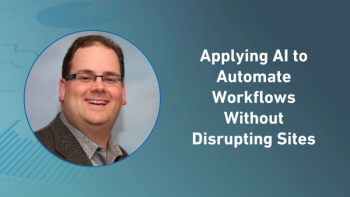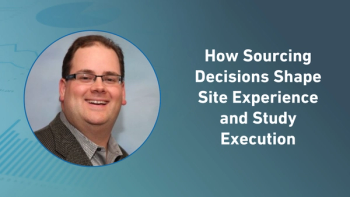
Four Strategic Considerations to Choose an EDC
Companies share their experience in future-proofing clinical data technology.
The role of electronic data capture (EDC) systems in clinical trials looks very different today than a decade ago. A recent poll of clinical data management experts attending a Veeva roundtable in Boston, MA indicates that most respondents (41%) use nine or more data providers in their clinical trials, with only 4% using one or two providers. Where EDCs were once the dominant data source, now data managers contend with many more, including third-party providers, connected devices, and electronic clinical outcome assessment (eCOA) applications.
To provide study teams with reliable data for their mid-study decision-making, data managers will need to clean and harmonize data across these disparate sources. EDC, in combination with a generic database surfacing data into statistical analysis systems or Excel listings, has been the primary tool for this activity, given the historical lack of proper data management tools. The result—true clarity of a subject’s overall data cleanliness via a functional clean patient tracker—has been elusive. Creating a single patient record from diverse data sources requires a
The significant changes to the role of EDCs force data management leaders to rethink how they evaluate systems when it comes to updating technology. Using the same processes from years past is no longer sufficient, and following the status quo can introduce unnecessary risk.
These challenges are prompting many sponsors to reconsider their EDC system and data workflow. Here are four key considerations for choosing a new EDC system.
1. Don’t replace like-for-like EDCs
At the risk of stating the obvious, when evaluating a new EDC, step one is ensuring the EDC is in fact better. EDC technology innovation should focus on two primary areas: continuous feature improvement and functionality that provides more intuitive and streamlined experiences for end users, resulting in more efficient ways of working
The experience of a research coordinator should be so intuitive that their time in the system is brief, with login credentials being the only certification requirement. Re-entering work if a page times out or shows blank-field queries should be a distant memory. For data management teams, enabling fully in-the-box programming and migration-free amendments with true zero downtime are vital innovations for better efficiency.
2. Look at the broader data ecosystem
A common mistake sponsors make is looking at EDC in isolation from the wider data workflow landscape. An EDC system paired with a clinical data workbench or data aggregation tool is now a core part of the data management strategy at leading companies like Alcon.
“Historically, external data has been a big part of the challenge—it’s inherently less standardized, and it’s not something we can control at a study-to-study level,” comments Leianne Ebert, head of clinical data operations at Alcon. “We can now utilize the clinical data workbench to easily join [vendor data] with the EDC data and see the full picture.”
Clinical data workbenches improve study team collaboration by providing each function with rapid access to a pipeline of accurate study data. Feeding clean and harmonized data to visualization and risk-based quality management (RBQM) tools enables more agile trials.
A unified clinical data management platform opens up opportunities for new ways of working. By using the workbench’s standard ingestion validation instead of legacy header reconciliation, EDC finally becomes just another data source. The workbench serves as the true clinical database, saving research coordinators the burden of reporting unnecessary data points into EDC for the sole purpose of enabling data reconciliation later.
“Bringing all of our central lab data into Veeva CDB (Clinical Database) not only reduces the site burden for data entry, it reduces the query and monitoring burden as well,” notes Regina Norelli, senior director of clinical data management at Replimune.
3. Automate faster access to clean and reconciled data
Automating time-consuming processes speeds up access to clean and reconciled data across the study team. For instance, GSK is automating data ingestion and harmonizing all relevant sources (e.g., EDC + other external study data) into a single environment using a clinical data workbench. Higher frequency updates, as fast as 15-minute incremental data loads, make it easier to export the latest data to stakeholders in other functions, including clinical data science and medical writing.
One global biopharma sees 60% of its trial data coming from external vendors—approximately 10-12 vendors per study. The company’s head of clinical data engineering explains how their team can streamline data review with a connected approach: “We needed a platform that could manage data ingestion, review, and quality control, and for everyone to be able to look at the same data at the same time in a validated space. When EDC and the clinical data workbench come together and talk to each other, the teams can look at the data holistically.”
Head of eClinical Programming and Solutions at ACELYRIN, Jamie Wildermuth, uses a clinical data workbench to automatically identify errors and create and close queries. She outlines the impact of automated checks: “We have eliminated about 3600 manual queries that we were previously carrying out, which has saved us around 300 hours of manual effort.”
4. Complete and concurrent data always
Modern, adaptive trial protocols are designed with interim analysis points, so data must be complete and concurrent throughout the study. Speedy and accurate data transfers from EDC are critical for faster interim deliverables and database lock turnaround times. Clinical trial teams cannot afford to wait each time a programmer needs to take a few hours to refresh the EDC data in their generic database. A direct connection between EDC and external data within a data workbench saves data managers’ time and reduces the risk of programmatic errors in manual data loading.
A global contract research organization (CRO) explains the advantages of data concurrency: “When you have to lock a database, you can go into the clinical data workbench and trust that what is in there, it’s also all in EDC. There aren’t two different sources where we will worry about the handoff. That goes away,” comments the CRO’s head of global programming and analytics.
Cleaning data quickly with a platform approach enables Alcon’s data management team to improve downstream timelines. “At the end of the day, the impact of getting the data final, clean, and accurate, as close as possible to the visit date, allows us to lock down and secure the data and accelerate the downstream deliverables,” explains Ebert.
Future-proofing clinical data technology
Industry leaders see the rise of clinical data science as the pathway to extract the most value from ever-expanding volumes of data. As data science principles become more prevalent in data review and analysis, and with artificial intelligence/machine learning solutions, we need to set a foundation for future innovation. We cannot stack complexity on top of complexity.
A close connection between an EDC system and a data workbench will enable sponsors to manage all clinical data efficiently, regardless of the number and variety of sources. A complete, unified, and near-real-time view of study data will ultimately save time, reduce errors, and improve trial outcomes for all.
Manny Vazquez, director of clinical data strategy, Veeva
Newsletter
Stay current in clinical research with Applied Clinical Trials, providing expert insights, regulatory updates, and practical strategies for successful clinical trial design and execution.



